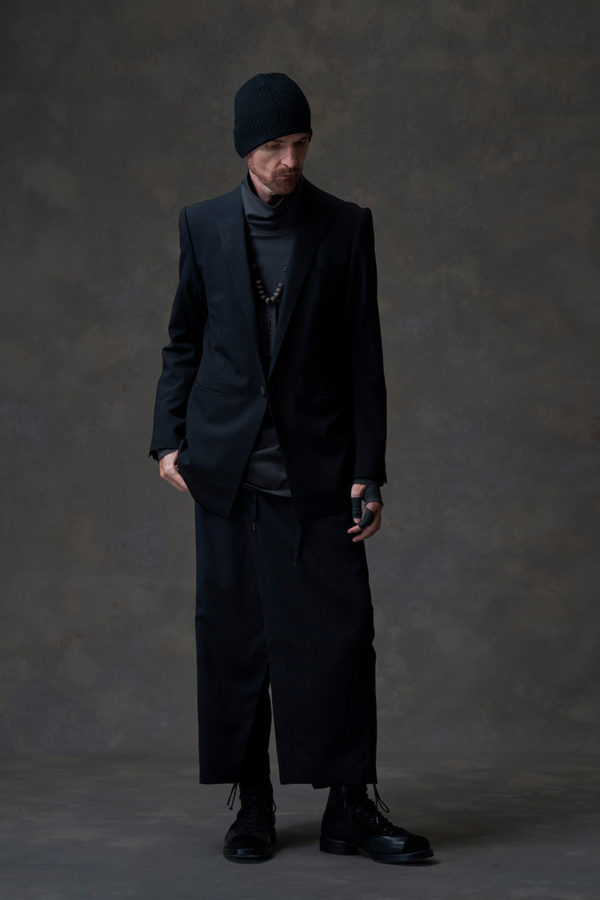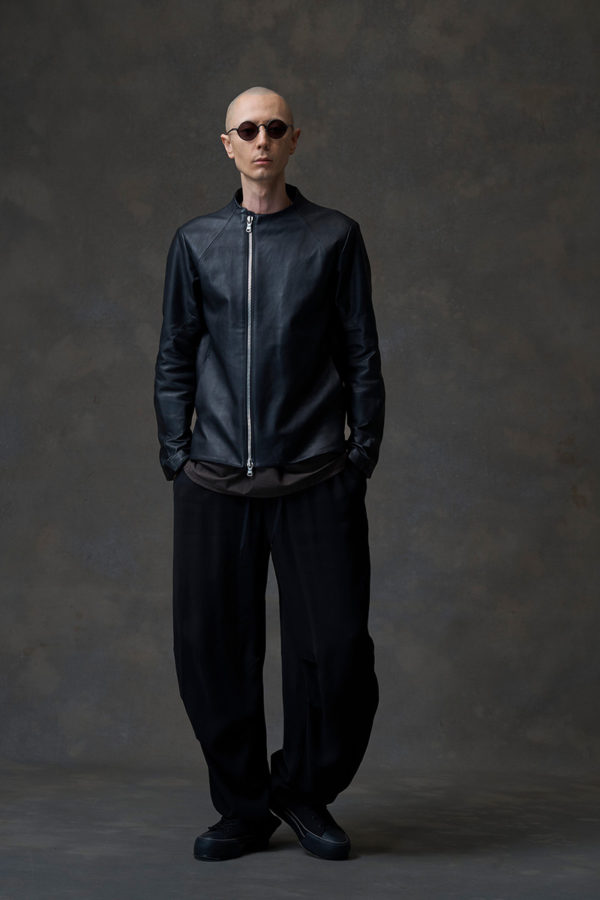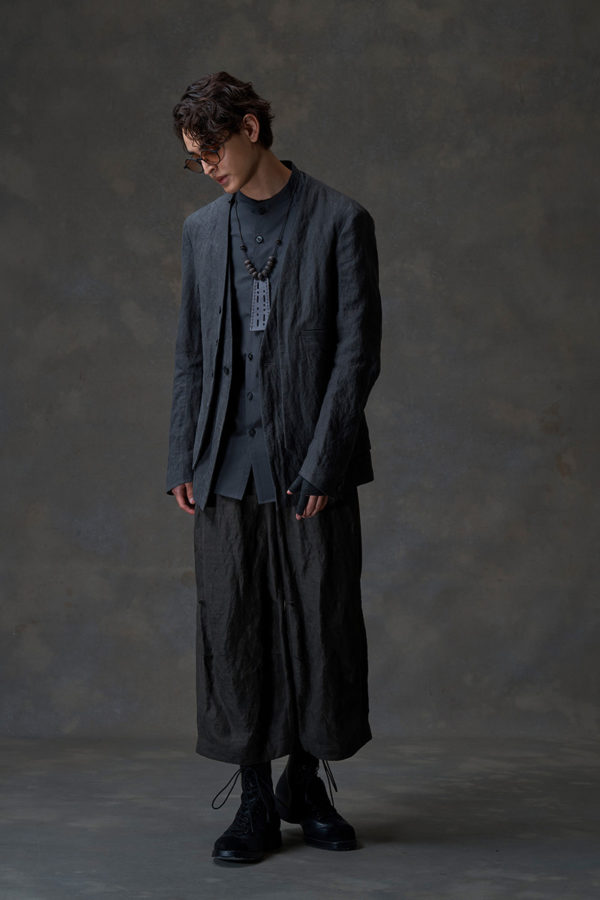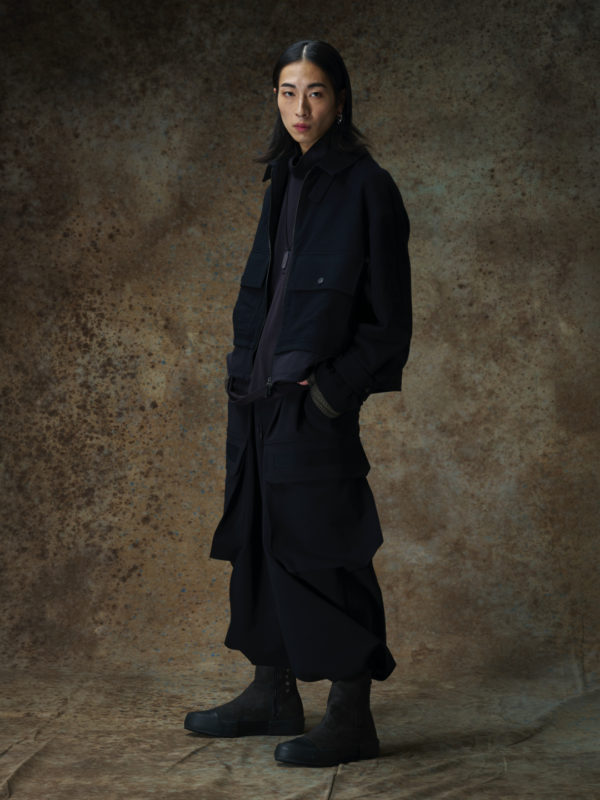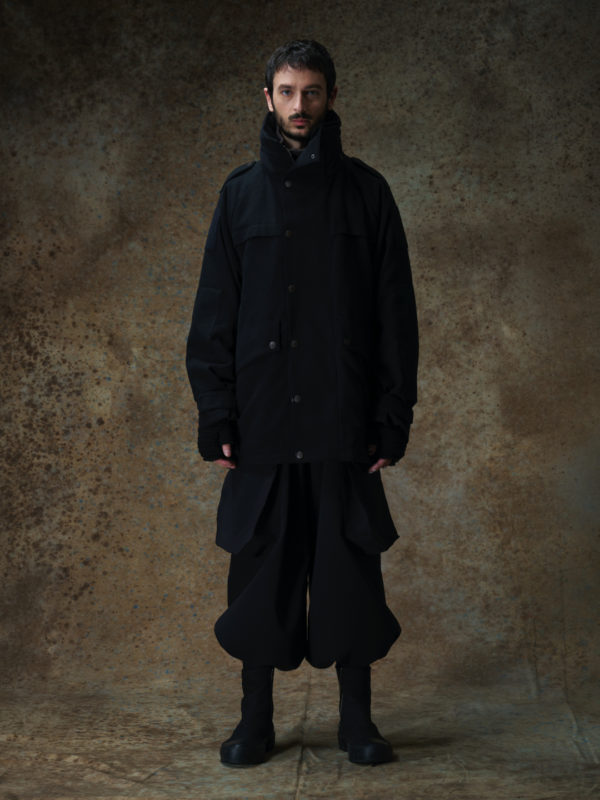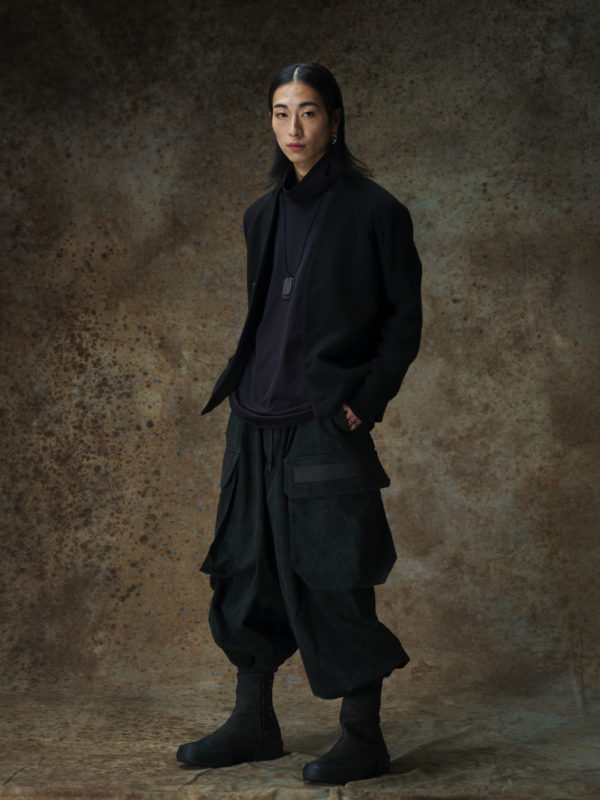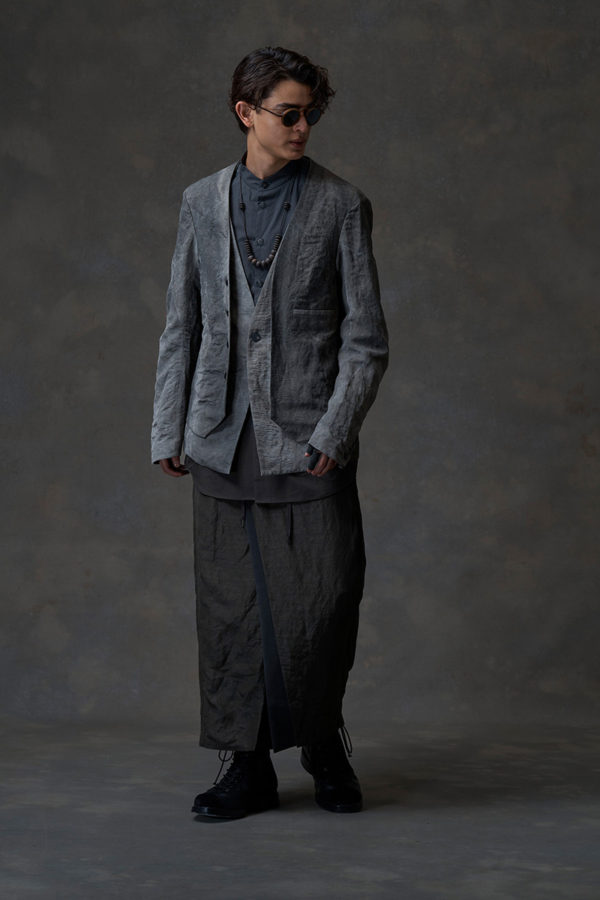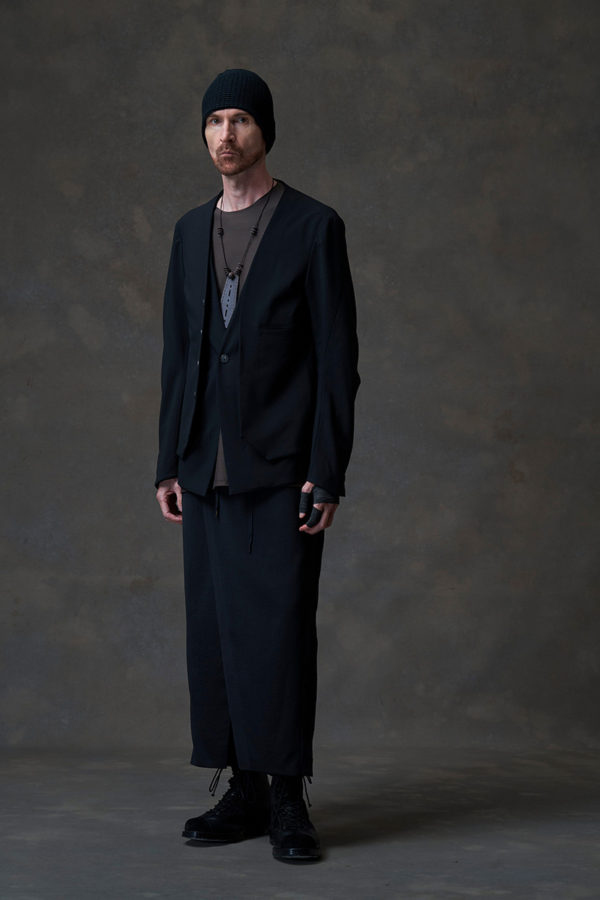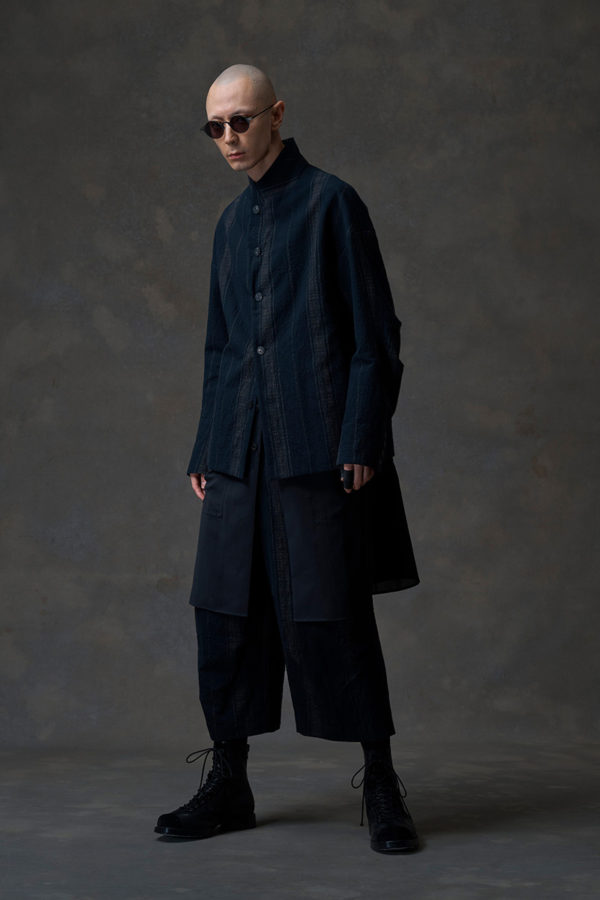![]()
by: Ela Casati | fashion journalist
Life has a strange way of connecting all the dots that form our experiences and character, which in turn lead us to where we are meant to be and who we are supposed to become. Devoa’s creative director, Daisuke Nishida, is one of those individuals who is a living testimony of this.
Hailing from Sasebo, in the Nagasaki prefecture of Japan, Nishida had an eclectic background before becoming a fashion creator, very much in the vein of his grandfather, who was a tailor. Among his multiple occupations, Nishida has been a shop clerk-turned-manager, a part-time worker at fabric factories and shops, a professional wrestler and a gym instructor, all while developing an interest in fashion and art. Martin Margiela, Marcel Duchamp and Helmut Lang are just a few of his many influences. He eventually went on to design and create custom pieces for a handful of customers in 2004.
In his own words, “during this time I was able to understand the process of production quicker than would have been possible if I had studied at fashion school. Without this experience and the various people I met my knowledge and passion for fabrics and clothes-making would never have developed and I would probably have given up on making clothes.” After a first successful release in Japan in 2007, Nishida took a leap of faith and held a small exhibition in Paris in 2008, but the results were lackluster, and he was on the verge of quitting his career as a fashion designer. However, the support of his local customers gave him the courage to continue and to eventually release Devoa in 2009.
![]()
This type of community collaboration is crucial to the development of Devoa. Nishida never misses the chance to point out the importance of the team that stands behind him in his creative process, giving credit where is due. “I must focus on many things, but my input in the finished product is about 30%. In fact, such finished products depend on the hands of many people besides me, like yarn makers, fabric weavers, fabric processors, pattern makers and sewers. I have immense respect for these fabric makers and artisans. Without them, I could never make my vision a reality.”
I try to create garments that have a human warmth to them.
Nishida’s approach to fashion is anything but fast. Instead of following the industry’s calendar and demands for non-stop marketable creation, he marches to the beat of his own drum, taking his time to craft the perfect garments but never taking a break. Right now, his focus is on color theory and delivering the highest possible quality through attention to detail: “Currently, […] the dyeing process is carried out two to three times to create complex designs. I enjoy expressing color in my work. I create designs from fabrics, and I try to make it so that the fabrics I use are highly functional.” And he is quick to add: “I try to create garments that have a human warmth to them.”
In fact, to Nishida the most outstanding detail when it comes to determining the level of craftsmanship of a garment is the interlining. This is how Devoa emphasizes the minimalism and exquisite harmony that Japanese designers are famous for: “Of course, comfort is important, but Devoa’s original manufacturing methods and unique perspectives are most patent in the interlining and sewing processes. Especially for the interlining, since we believe it is a fundamental part of a quality item, we use the same ones from factories in France and Italy that luxury brands use.” This guarantees that Devoa’s customers will receive items that can be worn for years to come while keeping their features intact.
![]()
Even after amassing a following that appreciates and admires Devoa for its technical complexity and impeccable quality, Nishida keeps a student-like attitude towards his craft, never shying away from learning something new and challenging himself to unexplored media. As both a fashion designer and contemporary artist, Nishida prioritizes constant evolution, even in the face of technologies that make creation, maybe, a bit too easy. “Nowadays, we are at a time where anyone can easily create garments, but I believe real designers are artists. This skill isn’t only about clothes, but also as being able to express one’s own imagination and taste through architecture, furniture design, ceramics and so on. I’m attempting to become that type of creator.”
This explains why he doesn’t see himself as someone who can accurately mentor younger creators as of now. When asked what advice he would give to upcoming designers, he states: “I don’t feel I have contributed a lot to fashion yet. There are still so many things I want to do and express, so I don’t feel I’m able to mentor anyone or to give very good advice.” But, in line with the constant self-reflection that is now a staple of his style, he says: “One thing I can say is that, looking back, I would tell my younger self to not give up on the things I am good at and to not lose focus on what I can do. This, to me, is crucial.”
www.devoa.jp
www.once-inc.com
@devoa_daisuke.nishida
